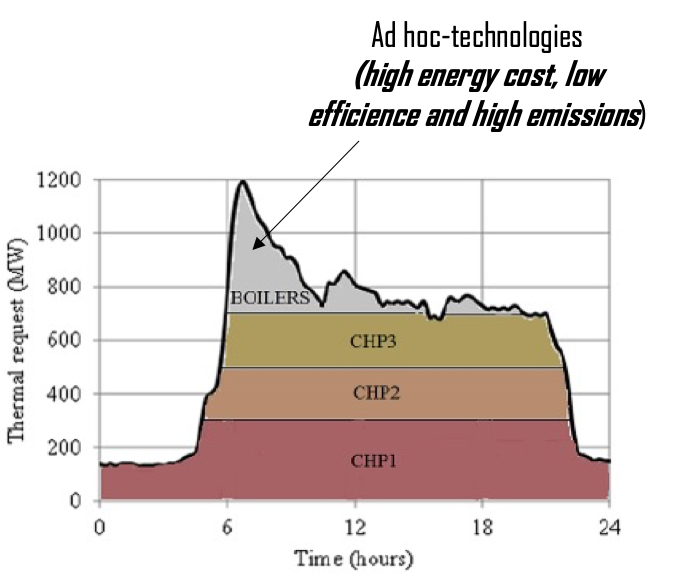
District heating networks are often characterized by significant peaks in the heat demand. The variation in demand is mainly due to the night shutdowns and attenuations operated in the buildings.
The additional energy provided during peaks is usually produced in an inefficient and expensive way, with a large impact on the environment. The proposed technology allows one mitigating the peaks in the thermal demand through an optimal management system of the network, performed by acting on the regulation of the valves in the heat exchange substations of the buildings and in the thermal barycenters of the network.

















